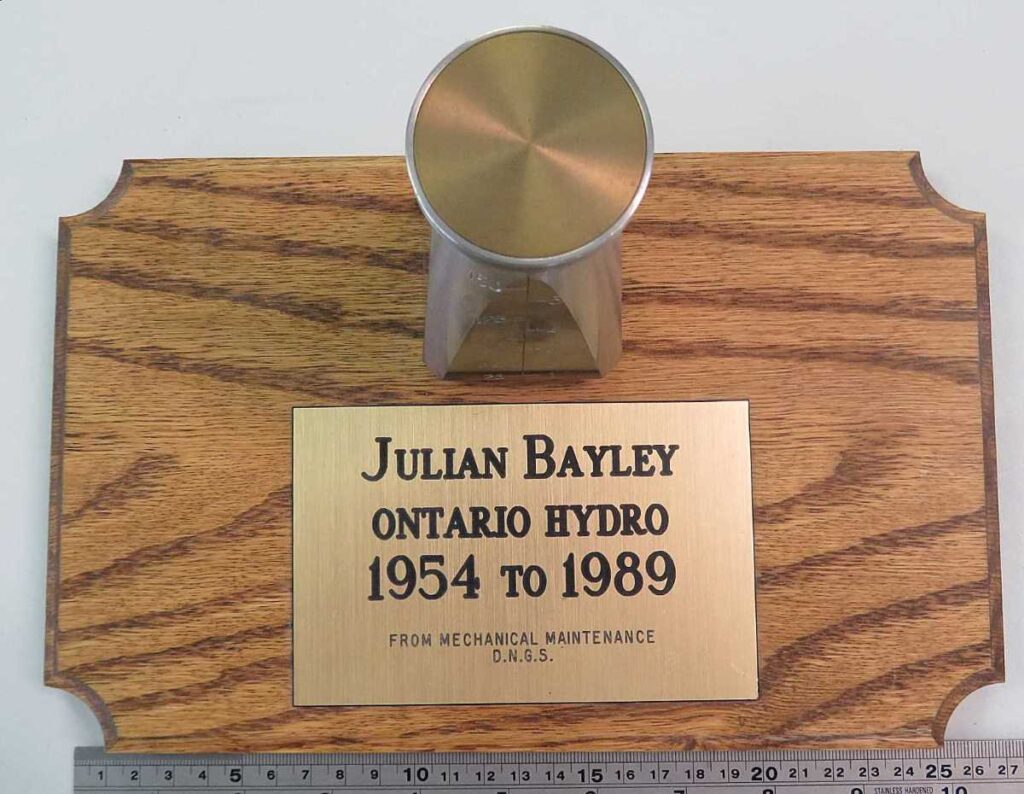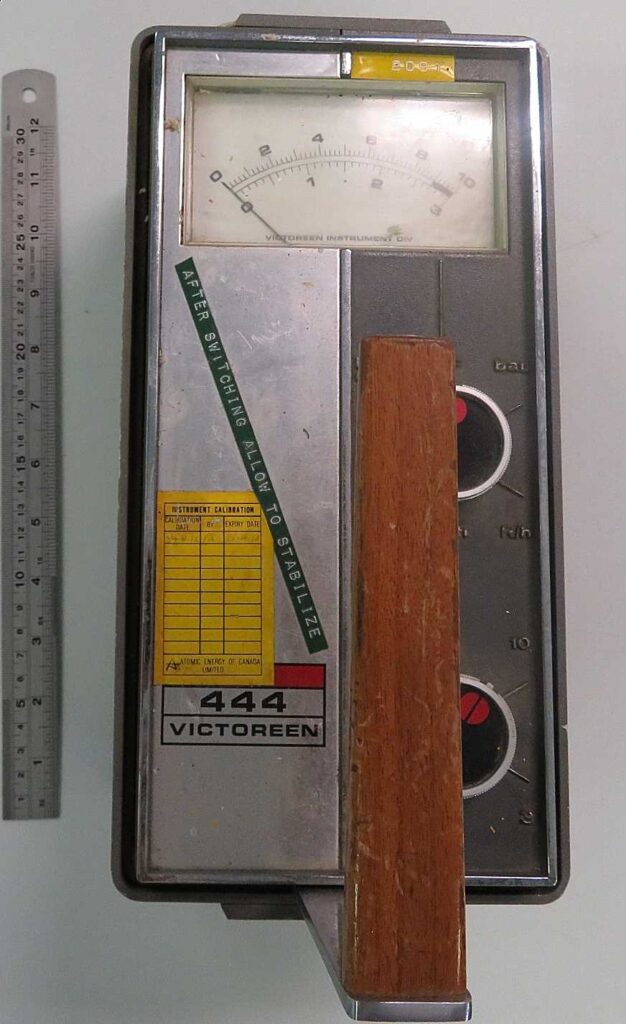Topaz, as naturally found, occurs in a number of light colours. Most commonly it is clear. Electron beams in the 10-12 MeV energy range can be used to irradiate topaz and induce atomic displacements and “colour centers”. The display shows “raw” topaz in the top row, followed by crudely cut facets on the second row, a clear and polished gem in the third row as well as one that has received some irradiation treatment to reach the “sky-blue” colour. The fourth row shows two examples of “London-blue” gems, the most commercially-desired colour. The photograph also shows beryl, which can be similarly coloured, but in this case the colour centers produce an orange colouring. To induce the “sky-blue” or “London-blue” colours desired by the jewellery market, white or colourless topaz requires a massive irradiation dose in the range of 30-40 x 106 Gy. The powerful electron beams of the PHELA and later IMPELA accelerators at CRNL were used to irradiate large quantities of topaz under commercial contracts.







